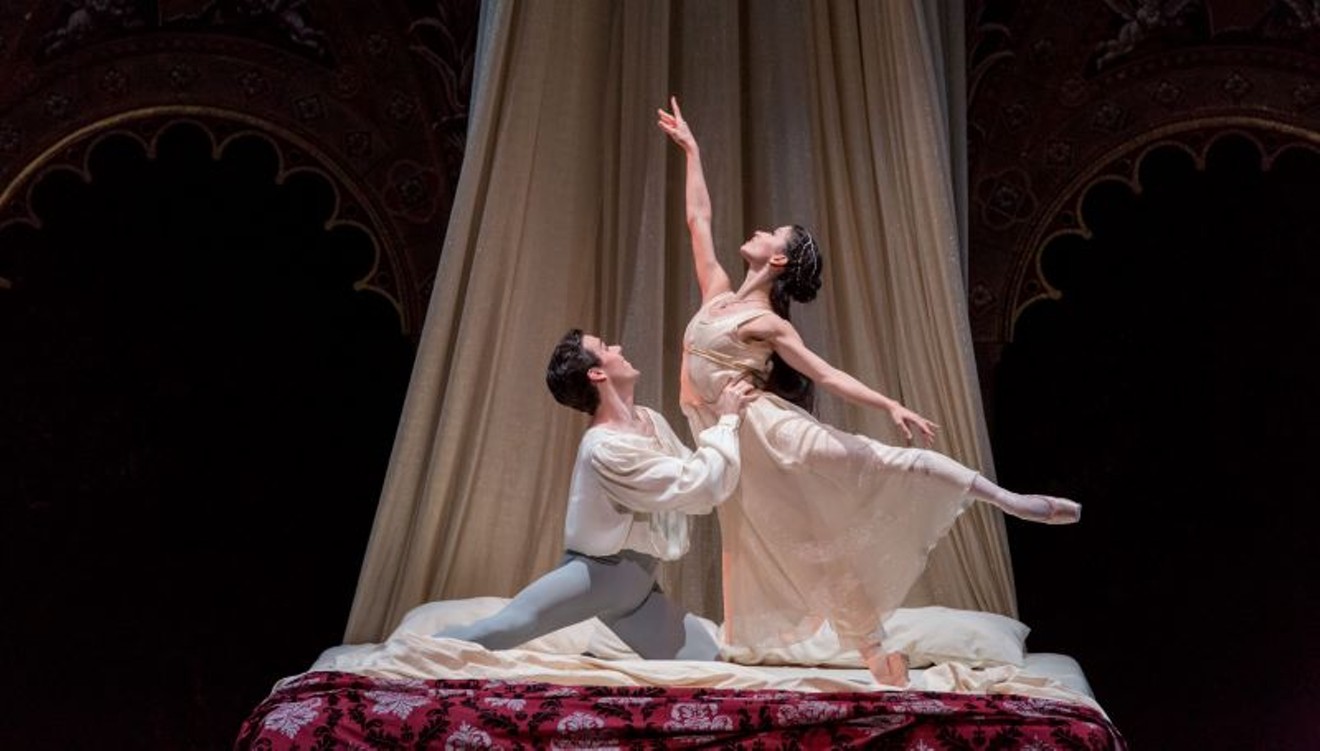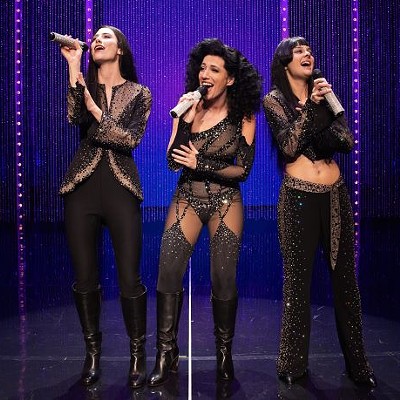When Stanton Welch once again presents his choreography for Romeo and Juliet starting on February 23, it will be eight years, almost to the day since that this production opened on the Wortham Theater stage.
In the interim, the company has taken the ballet around the world to Australia where it was well received and performed excerpts of it in mixed rep here in Houston. But this is the first time it will be presented in its entirety once again in Houston.
Most everyone knows the story of Romeo and Juliet, the teenagers who fall in love but happen to be from two families — the Montagues and the Capulets respectively — who are locked into a feud. One of Shakespeare's early plays, it does not end well for the title characters (either here or in West Side Story).
When Welch decided to put his own stamp on the story, he still focused on the two leads but added a lot more action for the other dancers in the ballet.
Principal Dancer Connor Walsh who will partner once again with Principal dancer Karina González, says this version of the classic tale with music by Prokofiev has only improved with age. "It really took us all by surprise how long it's been," he says. ""We did a big tour to Australia where we did so many shows. This is a ballet we feel that we've performed much more than we have. This idea that we've only done it here once is really exciting for us to bring it back. It's something the company feels really connected with."
And within that time, there have been changes.
"We're always trying to grow as artists and evolve our approach. We had a really long run in Australia I got to do more shows in Australia than I would get to do here in a couple years in a single ballet and so that really gave the ballet a chance to settle. It allowed the artists to find their way with the roles. You discover things on stage. We had two weekends to really unpack that work. So I think a lot of work was done in Australia and we're picking up from there which is nice," Walsh says.
"But hopefully on a personal level, hopefully I will bring more nuance and bring more subtlety and thought to the role now that I can look at the video with fresh eyes. To look at my own work and my own interpretation and critique myself and hopefully make some new choices which will bring the story to a more fulfilled life."
The poetry of Shakespeare's words are not lost in this translation to ballet , Walsh says. "This story is one of the most romantic and passionate stories to ever have been written. The writing is so visual and so beautiful that it's not just there's a great story between Romeo and Juliet and these other dynamic characters but the words within this play motivate movement. In the balcony pas de deux there's moments where you can tell Stanton is inspired exactly by the words, not just the narrative."
Walsh and González premiered the lead roles in 2015 and since that time have danced the balcony pas de deux several times both internationally (Latvia!) and nationally — and galas in Houston and abroad.
"It's a very technically challenging pas de deux and getting more experience to perform it has allowed us to feel a little freer with the more daunting lifts and more challenging moves that Stanton always puts in there have become much more organic to us so that makes it so much more enjoyable when you're not stressing and you have trust in your partner and trust in the technique of how to execute so you can really lose yourself in your dancing," Walsh says.
In addition there's the Prokofiev music. "It is so passionate, so romantic So powerful, " Walsh says. "This is the type of score I'd be happy to see the symphony perform without all the wonderful visuals. This is something the dancers just eat up. We love dancing to this score."
Walsh says Romeo and Juliet was a huge ballet to tour. "These sets are big and wonderful and realistic and it also involves a giant cast as many of Walsh's ballets do. Stanton always tries to utilize as much of the company as possible. He tries to bring as many narratives within a story out. Instead of zooming so tightly on Romeo and Juliet, he's somebody who zoomed out to the whole world, the whole family. Everyone in the time period to try and create a world for us to exist in rather than just a story of two people."
The design of this production has stayed the same along with its costumes, with some replacements of course. "Such incredible fabrics. Some a little more challenging to dance in," he says, laughing.
Walsh says he grew up watching balcony scenes and the one in Romeo and Juliet is probably his favorite dance in this production. "It's such iconic music and such an iconic pas de deaux ballet so I really treasure every moment that I get to perform it. You feel like you're living your dream moment."
He's also been working on his fight scenes with First Soloist Chris Coomer (in his last performance as he moves into the staff.)
"The sword fighting in this production, we've really going for it. We're really trying to challenge ourselves to not just make it look like we’re dancing with swords. Stanton really wanted to make it look like we're fighting so we tried to make it with a sense of realism and with dynamic realism that has people on the edge of their seats and as I’m doing it I'm on the edge of my seat to to keep up with it and survive it."
Asked how many times he's died in this or any ballet, Walsh laughs, responding: "More than nine lives. I'm doing better than a cat. I definitely have done my fair share of deaths. And this one is quite beautiful." Dying while drinking poison is especially challenging he says. "Especially when you have X amount of music to execute it. It's something we're going to continue to play with and try to make as realistic as possible.""The sword fighting in this production, we've really going for it. We're really trying to challenge ourselves to not just make it look like we’re dancing with swords."
tweet this
Why should audiences come back?
"Just like any great story, Romeo and Juliet in this production specifically will get better with time. It will continue to grow and find life. Specifically to this production I think it’ll be even more powerful this time than last. I think it will be an irresistible watch.
"I think especially for young people or people of all ages I think it's a very easy to understand story. The fact that you have these two feuding families and a romance. It's a familiar story so it's not something that people will have to be digging through the program to follow along. I think people can just come to the theater and let the music and dance wash over them."
Performances are scheduled for February 23 through March 5 at 7:30 p.m. Thursday, Fridays and Saturdays; 1:30 p.m. Saturday March 4 and 2 p.m. Sundays at the Wortham Center, 501 Texas. For more information, call 713-227-2787 or visit hustonballet.org. $25-$220.







